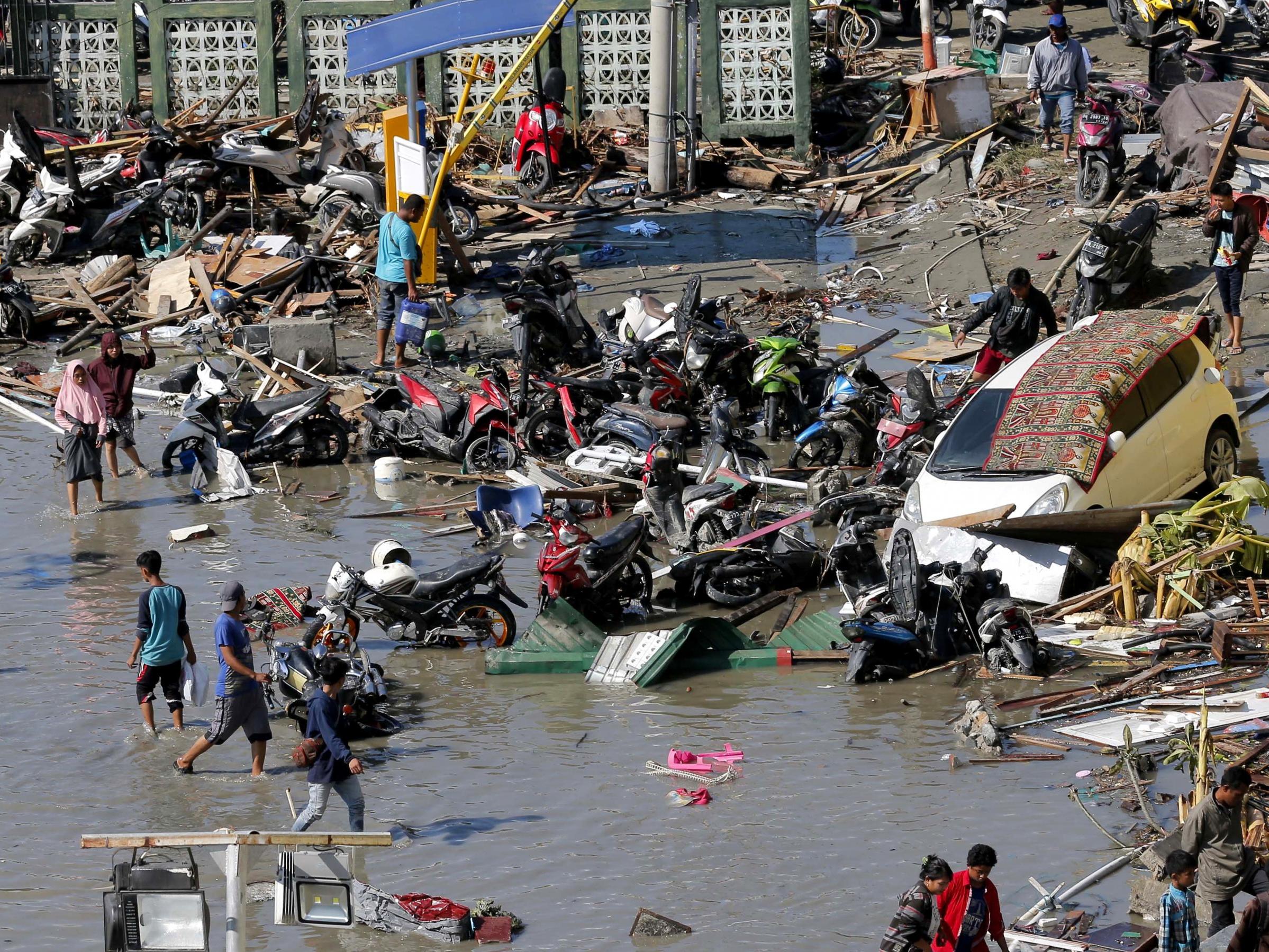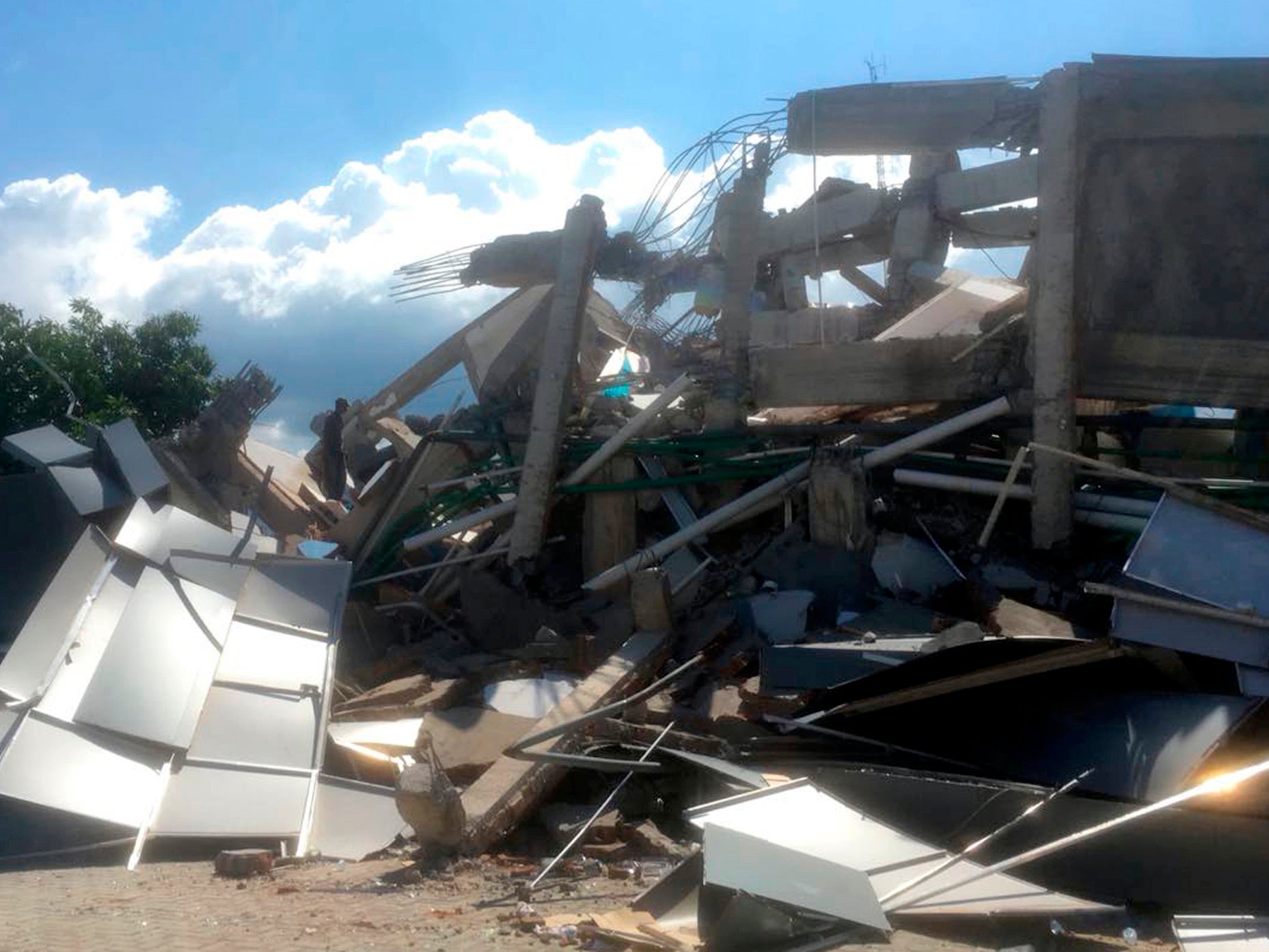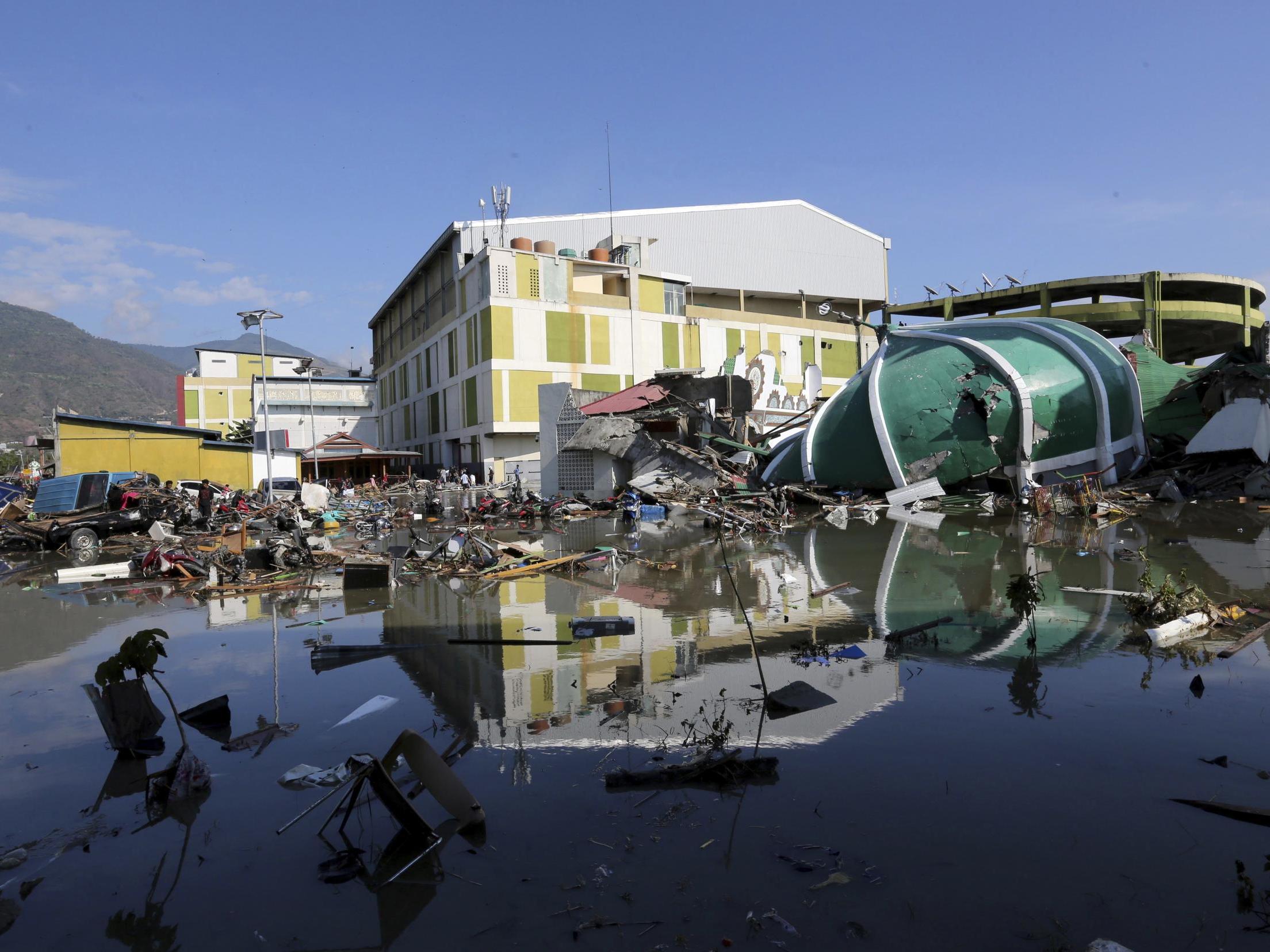Indonesia tsunami: Death toll rises to 832 amid fears final number could be in thousands
Rescuers struggling to save survivors due to lack of equipment
Your support helps us to tell the story
From reproductive rights to climate change to Big Tech, The Independent is on the ground when the story is developing. Whether it's investigating the financials of Elon Musk's pro-Trump PAC or producing our latest documentary, 'The A Word', which shines a light on the American women fighting for reproductive rights, we know how important it is to parse out the facts from the messaging.
At such a critical moment in US history, we need reporters on the ground. Your donation allows us to keep sending journalists to speak to both sides of the story.
The Independent is trusted by Americans across the entire political spectrum. And unlike many other quality news outlets, we choose not to lock Americans out of our reporting and analysis with paywalls. We believe quality journalism should be available to everyone, paid for by those who can afford it.
Your support makes all the difference.At least 832 people have died after a 7.5-magnitude earthquake and powerful tsunami hit the island of Sulawesi in Indonesia, the country’s disaster agency announced as rescuers struggled to reach victims.
Sutopo Purwo Nugroho, the agency’s spokesman, said the majority of those who have died were in the city of Palu, home to 380,000 people.
“The death toll is believed to be still increasing, since many bodies were still under the wreckage, while many have not been reached,” the agency’s spokesman, Sutopo Purwo Nugroho, said.
Indonesian TV broadcast dramatic smartphone footage of the tsunami’s waves hitting Palu, causing people to scream and run in fear.
The water was at least 3 metres high when it arrived on land and is thought to have been 6 metres in some areas.
Bodies covered in blue and yellow tarps lined the streets of Palu, and officials said they were digging a mass grave for at least 300 of the dead.
Indonesia’s president, Joko Widodo, toured Palu on Sunday and said rescuers were having difficulty reaching victims because of a shortage of heavy equipment.
“There are many challenges. We have to do many things soon, but the condition does not allow us to do so,” Mr Widodo said.
He said authorities were deploying more heavy machinery so emergency workers would be able to recover more victims on Monday.
There was also a shortage of fuel, electricity and food.
The country’s disaster agency said that the area affected by the tsunami is bigger than initially thought.
“We are trying our best. Time is so important here to save people,” said Muhammad Syaugi, head of the national search and rescue team.
Rescuers scrambled to reach trapped victims in Palu who were screaming from inside fallen buildings.
A team worked to free a 15-year-old girl, who was trapped in her collapsed house next to the bodies of her dead mother and niece.
Nurul Istikharah was unable to move her legs, which were under heavy concrete rubble.
The team struggled to control water flowing into the rubble from a leaking pipe, amid fears the teenager could drown.
She was unconscious at times but rescuers continued to talk to her and offered the 15-year-old food and water as they continued to try and free her.

People had called out on Sunday from the remains of the city’s eight-story Roa-Roa Hotel.
The cries had gone silent by the afternoon but a 25-year-old woman was pulled alive from the rubble on Sunday evening.
Indonesia‘s National Search and Rescue Agency released several images of the woman lying on an orange plastic stretcher, covered in a white blanket.
Officials estimated around 50 people could still be inside, with around 100 to 200 people thought to be buried.
Palu’s streets were filled with wreckage from other damaged buildings.
More than half of the 560 inmates in a local prison fled after its walls fell during Friday’s quake, according to the warden, Adhi Yan Ricoh.
Looters also tried to enter an unstable shopping complex in the area, despite continuing strong aftershocks.
The city is built around a narrow bay that apparently magnified the force of the tsunami waters as they swept inland.
Some residents returned to their destroyed homes and tried to salvage a few waterlogged belongings.

The search efforts in other coastal areas have been hindered by damaged roads and a lack of power and telecommunications in the region, which were cut off in the disaster.
Aid and supplies are being flown to badly affected areas on military and commercial planes and helicopters.
Sixty-one nationals of other countries were in Palu at the time of the disaster.
Most have been accounted for but three tourists from France and one from Malaysia are missing. One visitor from South Korea is believed to be trapped in the Roa-Roa hotel.
The survivors will be evacuated to the Sulawesi city of Makassar, in the island’s south.
Some locals in Palu chose to sleep outside on Saturday night, due to the quake’s aftershocks.
Hospital buildings were damaged in the disaster and patients were also treated outdoors. Hundreds of people have been injured and medical staff were left overwhelmed.
“There was no time to save ourselves,” said Dwi Haris, who suffered a broken back and shoulder in the disaster. He is being treated at Palu’s Army hospital.
“I heard my wife cry for help, but then silence,” he said. ”I don’t know what happened to her and my child. I hope they are safe.”

UN officials are in contact with Indonesian authorities and “stand ready to provide support as required”, according to a spokesperson.
Pope Francis offered a prayer on Sunday for all those affected.
Indonesia is vulnerable to earthquakes because of its location on the Ring of Fire, an arc of fault lines and volcanoes in the Pacific Basin.
A high-tech early warning system of sea floor sensors, that could be used in such situations, has failed to move beyond the prototype phase after a delay in funding.
In 2004, a huge earthquake off the Indonesian island of Sumatra triggered a tsunami across the Indian Ocean.
It killed 230,000 people in a dozen countries, including more than 120,000 in Indonesia.
Associated Press contributed to this report
Subscribe to Independent Premium to bookmark this article
Want to bookmark your favourite articles and stories to read or reference later? Start your Independent Premium subscription today.

Join our commenting forum
Join thought-provoking conversations, follow other Independent readers and see their replies
Comments